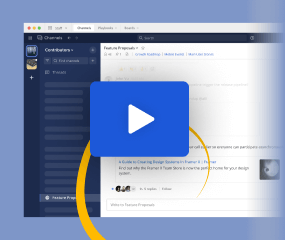Chinese, Japanese and Korean search
Available on all plans
self-hosted deployments
Enabling search for Chinese, Japanese and Korean (CJK) requires special configuration, since these languages do not contain spaces.
See database requirements documentation for how to set up search for these languages.
Contents
Below is additional information on how to configure the database for different languages.
中文 / Chinese
尽管在 Mattermost 8.0 更新后,官方推荐为了更好的性能请使用 PostgreSQL 作为后端数据库。
但就目前而言,使用 MySQL 能够更容易的实现中文语言的全文搜索功能,在妥善配置 ngram 后,根据官方数据库构造重新生成索引即可达成。 具体的操作方式,可参考: Cannot search CJK contents。
有关 PostgreSQL 的配置方式,请参考以下流程:
配置 SCWS
# 取得 SCWS 代码
wget http://www.xunsearch.com/scws/down/scws-1.2.3.tar.bz2
# 解压缩
tar xvjf scws-1.2.3.tar.bz2
# 进入解压后的目录
cd scws-1.2.3
# 执行配置脚本、编译并安装
./configure --prefix=/usr/local/scws ; make ; make install
# 可选:检查文件是否存在
ls -al /usr/local/scws/lib/libscws.la
/usr/local/scws/bin/scws -h
# 可选:将词典安装在 /usr/local/scws/etc 中
cd /usr/local/scws/etc
wget http://www.xunsearch.com/scws/down/scws-dict-chs-gbk.tar.bz2
wget http://www.xunsearch.com/scws/down/scws-dict-chs-utf8.tar.bz2
tar xvjf scws-dict-chs-gbk.tar.bz2
tar xvjf scws-dict-chs-utf8.tar.bz2
配置 Zhparser
# 下载 Zhparser 源代码
git clone https://github.com/amutu/zhparser.git
# 进入下载后的目录
cd zhparser
# 编译并安装
SCWS_HOME=/usr/local/scws make && make install
Note
自 Mattermost 6.0 起,官方已不再使用 mattermost/mattermost-prod-db 作为数据库镜像,你可以直接使用安装在服务器上的 PostgreSQL 数据库,或者使用 PostgreSQL 官方的 Docker 镜像。
如果使用 Docker 镜像作为数据库,可以预先执行以下命令,安装依赖(请根据实际的 PostgreSQL 版本选择)。
# 更新本地缓存
apt update
# 配置 SCWS 时需要的依赖
apt install wget make gcc
# 配置 Zhparser 时需要的依赖
apt install git postgresql-server-dev-13
创建 extension 并增加解析配置
-- 创建 extension
CREATE EXTENSION zhparser
-- 创建 text search configuration
CREATE TEXT SEARCH CONFIGURATION simple_zh_cfg (PARSER = zhparser);
-- 配置 token mapping
ALTER TEXT SEARCH CONFIGURATION simple_zh_cfg ADD MAPPING FOR n,v,a,i,e,l WITH simple;
更新 PostgreSQL 配置
将 postgresql.conf 中的 default_text_search_config 的值更改为 simple_zh_cfg。
更改后,需要重启数据库方可生效。
Note
配置完成后,需根据 Mattermost 官方仓库中的 SQL 建表语句重新创建索引,方可正式启用中文语言的全文搜索功能。
未尽事宜,可以参考以下链接:
日本語 / Japanese
日本語翻訳の改善は大歓迎です。自由に変更していただいて結構です。
検索設定
Mattermost で日本語検索をするためにはデータベースの設定変更が必要です
日本語(CJK)検索設定のドキュメントの改善にご協力ください
ガイド
Qiita上で Mattermost のインストールおよび構成のガイドを提供しています。詳細については、こちら をご覧ください。
한국어 / Korean
이 문제에 대한 논의는 이 이슈 에서 시작되었습니다.
한국어 버전 이용 시 문제점을 발견하면 Localization 채널 또는 한국어 채널 에서 의견을 제시할 수 있습니다.
검색을 위한 데이터베이스 설정
PostgreSQL: PostgreSQL 데이터베이스에서는 따로 설정이 필요하지 않습니다.
MySQL: MySQL에서는 전문 검색(Full-text search) 기능에 제한이 있기 때문에 추가적인 작업이 필요합니다.
MySQL 해결 방법
n-gram parser 를 이용하기 위해서는 MySQL의 버전이 5.7.6 이상이어야 합니다.
MySQL의 구성 파일에서 n-gram의 최소 토큰 크기를 다음과 같이 설정합니다.
[mysqld]
ft_min_word_len = 2
innodb_ft_min_word_len = 2
데이터베이스를 재시작합니다. (이 과정은 반드시 필요합니다.)
일부 테이블의 전문 검색 색인을 다음과 같이 재구성합니다.
게시물 검색을 위한 설정 ( 참조 )
DROP INDEX idx_posts_message_txt ON Posts;
CREATE FULLTEXT INDEX idx_posts_message_txt ON Posts (Message) WITH PARSER ngram;
해시 태그 검색을 위한 설정 ( 참조 )
DROP INDEX idx_posts_hashtags_txt ON Posts;
CREATE FULLTEXT INDEX idx_posts_hashtags_txt ON Posts (Hashtags) WITH PARSER ngram;
사용자 검색을 위한 설정
Users.idx_users_txt_all과Users.idx_users_names_all을 n-gram 없이 재구성합니다.
